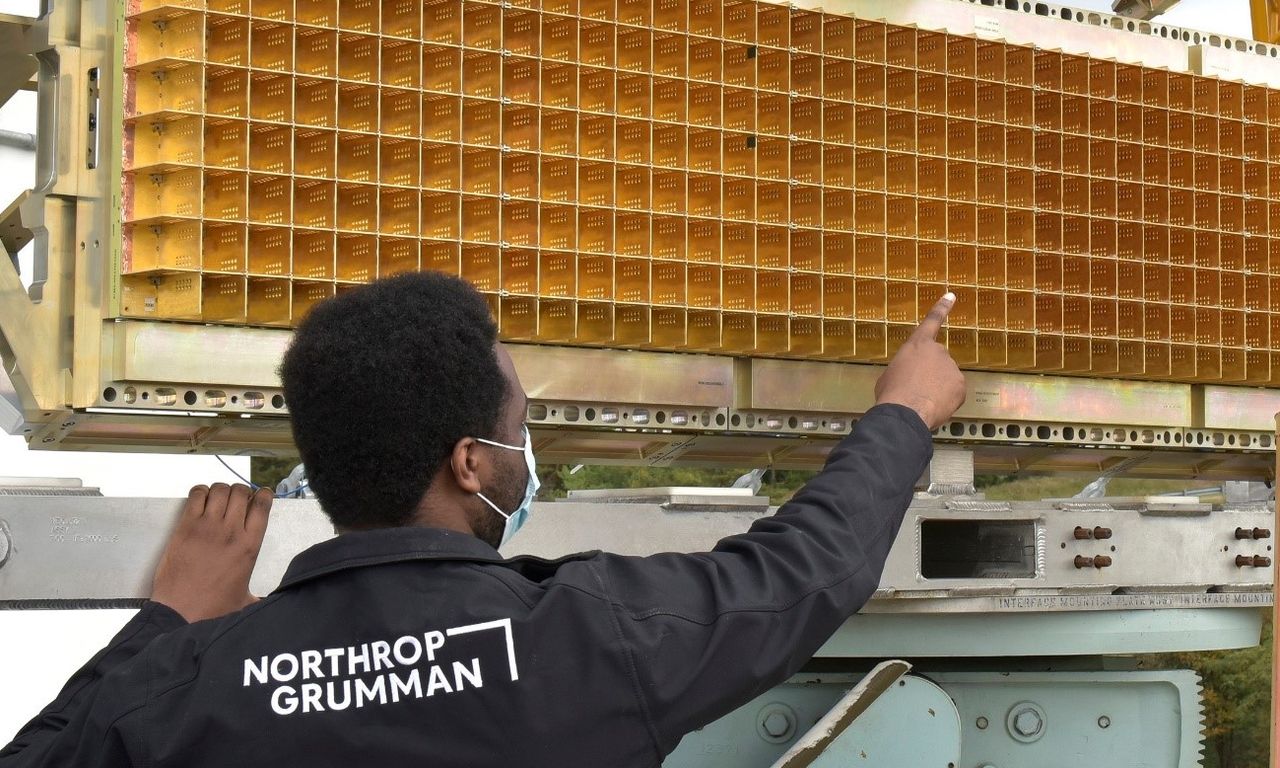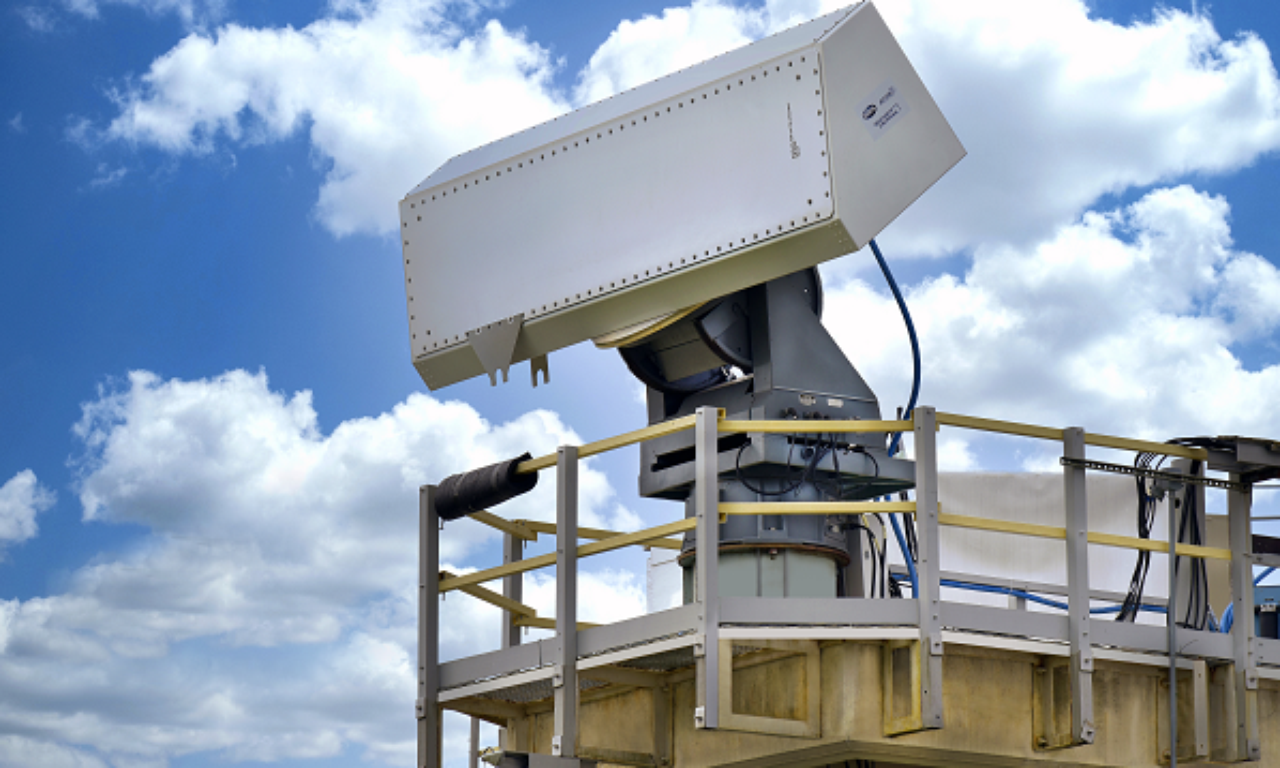You are using an out of date browser. It may not display this or other websites correctly.
You should upgrade or use an alternative browser.
You should upgrade or use an alternative browser.
Raytheon FlexDAR
- Thread starter bobbymike
- Start date
Is it this concept by any chance? This image comes from a 2013 document.
- Joined
- 16 April 2008
- Messages
- 8,375
- Reaction score
- 10,253
Is it this concept by any chance? This image comes from a 2013 document.
Sort of?
That picture seems to be associated with the INTOP (Integrated Topsides) effort, of which FlexDAR is a part. The picture is obviously not a serious ship design; it's a mockup of various existing design elements (Burke hull and superstructure, AGS turret, etc.), presumably so they have a mostly known 3d model for simulating reflections and signal propagation for the various elements of the project.
- Joined
- 16 April 2008
- Messages
- 8,375
- Reaction score
- 10,253
So with this radar would American ships be more like European ships?
In what way? Don't fixate on the ball at the top of the mast; that's aesthetic and not inherently part of FlexDAR or even INTOP, as far as I can tell. The main effort is about various ways to use planar arrays for multiple uses -- single apertures that can support radar, EW, and communications functions as needed, sometimes even simultaneously.
I had read that the intent was to decrease the antennas. So I thought they wanted to start building ships with a similar design to European ships, with the mast redesigned as in the hypothetical design. Italian Horizon-class ships have that kind of design.
Last edited:
- Joined
- 16 April 2008
- Messages
- 8,375
- Reaction score
- 10,253
I had read that the intent was to decrease the antennas. So I thought they wanted to start building ships with a similar design to European ships, with the mast redesigned as in the hypothetical design. Italian Horizon-class ships have that kind of design.
Different logic. The European radars with balls on the masts are basically a cost-savings measure -- instead of three or four radar antennas like the US fixed phased-array radars, they can get 360-degree coverage with two or even one rotating antenna(s). But that antenna is still just a radar antenna; those ships still have other antennas for EW and radio-frequency communications applications. What the USN is talking about with this effort is eliminating the need for separate antennas for radars, electronic warfare jammers, and communication systems. Those antennas all fight for space and separation on the superstructure. Combining them can simplify topside design and interference issues.
NRL Demonstrating Advanced Distributed Radar Concepts with FlexDAR
The U.S. Naval Research Laboratory (NRL) completed the installation of the Flexible Distributed Array Radar (FlexDAR) earlier this year and began demonstrations with nodes operating at the NRL
www.nrl.navy.mil
Wondering if the tech is now available to miniaturize the digital receivers to a level so they can be integrated within the individual TRMs, cutting out the need for groups of TRMs analogue receiver data to transferred by coaxial cable a receiver group processor, do wonder if possible with short X-band but expect maybe possible with the larger S-band. If possible that will allow each TRM to be an individual radar used singly or in groups and with appropriate sophisticated software to make it easier to operate as active/passive radar, EW receiver/jammer and large bandwidth comms line of sight.
Northrop Grumman were awarded contract by Office of Naval Research for the Integrated Topside (InTop) ship program dating back to 2010, to help with electromagnetic interference/electromagnetic compatibility issues currently caused by the large number of different antennas on ships, recently NG released a PR on their Terracotta wideband AESA

 news.northropgrumman.com
news.northropgrumman.com
Northrop Grumman were awarded contract by Office of Naval Research for the Integrated Topside (InTop) ship program dating back to 2010, to help with electromagnetic interference/electromagnetic compatibility issues currently caused by the large number of different antennas on ships, recently NG released a PR on their Terracotta wideband AESA

Northrop Grumman Flight Tests Digital Wideband AESA Sensor
BALTIMORE – June 22, 2021 – Northrop Grumman Corporation (NYSE: NOC) has successfully flight demonstrated its new Terracotta sensor – a fully-digital open mission systems (OMS)-compliant wideband active electronically scanned array (AESA). The flight...
aonestudio
I really should change my personal text
- Joined
- 11 March 2018
- Messages
- 2,537
- Reaction score
- 5,895
So similar.
The ACT-IV system can perform radar, electronic warfare and communication functions simultaneously by controlling a large number of independent digital transmit/receive channels. The agility of the digital AESA was demonstrated during multiple demonstrations at the Northrop Grumman test range and will enable future warfighters to quickly adapt to new threats, control the electromagnetic spectrum, and connect to tactical networks in support of distributed operations.

 news.northropgrumman.com
View: https://twitter.com/DARPA/status/1432735800068919297
news.northropgrumman.com
View: https://twitter.com/DARPA/status/1432735800068919297
The ACT-IV system can perform radar, electronic warfare and communication functions simultaneously by controlling a large number of independent digital transmit/receive channels. The agility of the digital AESA was demonstrated during multiple demonstrations at the Northrop Grumman test range and will enable future warfighters to quickly adapt to new threats, control the electromagnetic spectrum, and connect to tactical networks in support of distributed operations.

Northrop Grumman Delivers Advanced Multifunction Sensor System to AFRL and DARPA
LINTHICUM, Md. – Aug. 31, 2021 – Northrop Grumman Corporation (NYSE: NOC) delivered the Arrays at Commercial Timescales Integration and Validation (ACT-IV) system to the Air Force Research Laboratory (AFRL) and Defense Advanced Research Projects Agency...
Similar threads
-
-
-
-
ESSM intercept of high-diving threat proves expanded defensive capability
- Started by seruriermarshal
- Replies: 11
-
Boeing Counter-Electronics High Power Microwave Advanced Missile (CHAMP)
- Started by Triton
- Replies: 85

